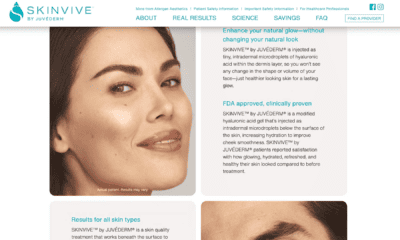As we age, our relationship with our mirrors gets stronger and stronger. Seeing ourselves age can be troublesome for many reasons, but shouldn’t hold us back from looking our best in our 30’s, 40’s and 50’s.
With the advent of Botox and fillers, scientists have supplied a solution that does not involve scalpels or an operating room to turn back the clock. Simple but precise injections can remove lines and even add volume back to the face, reverting decades of aging in a quick office treatment.
Even though the act of inserting a syringe is in itself simple, knowing where and what to inject is of utmost importance. In this PSC Roundtable, board certified plastic surgeons describe the truly transformative results fillers can have when used correctly.
The importance of asking questions about fillers
The PSC was asked, “When I go in, will the doctor tell me where I need fillers or do I tell the doctor where I want fillers?”
“It’s great that you can come in to see a plastic surgeon who can really guide and direct you,” answers Dr. Paul Watterson of Charlotte Plastic Surgery. “A lot of times we’ll go to the mirror and think we need to do this or that. But really what we think and what a board certified plastic surgeon might think could be totally different, giving you a much better result.”
Again, it may seem easy to inject filler into your cheeks, but knowing where exactly to put the fillers is critical to great results.

pre-post
“[Injectables] are the most common non-surgical procedure done in plastic surgery, so communication is key, ” explains Dr. William P. Adams Jr. of Dallas. “It’s important for the patient to explain what bothers them and where they think they want to have a filler…but maybe they really need Botox, or something else. It’s a good way to start, but going to a qualified surgeon who knows what would be best for you is very important.”
It’s more than having anatomical knowledge
Board certified plastic surgeons are in the know about the latest filler products, frequently reading scientific study analyses and discussing the products with fellow surgeons. This attention to detail is exactly what patients need to seek out if they want the best results.

“The patients don’t always know exactly what’s available to them, and that’s where we come in,” says Dr. Michael Beasley, also of Charlotte Plastic Surgery. “New fillers come out every year, and some are better suited for different areas of the face. We need to guide the patient on what we think might be best for them.”
What worked last time may still work today, but there might be something even better. Trusting your surgeon to know about the new products is everything. “The products available today are so good even compared to 5 years ago,” explains Adams. “You can really make amazing changes for people just with non-surgical injections.”















Facebook
Twitter
Instagram
YouTube
RSS